The Thermo Scientific™ ARLTM PERFORM’X wavelength dispersive X-Ray fluorescence (WDXRF) spectrometer provides a rapid and precise method of analyzing up to 90 components in nearly any liquid or solid sample, thanks to its advanced platform. Advantages over other analytical techniques include:
- Quick and easy sample preparation
- Examination of a sample’s whole surface, a portion of it, or certain areas
- Speed of analysis
- High stability and exceptional precision
- Wide dynamic range (from ppm levels to 100%)
- Completely unknown materials can be swiftly and easily analyzed using advanced standard-less analytical tools
Apart from achieving unprecedented levels of speed, reliability, and adaptability across the widest range of sample kinds, the compact ARL PERFORM’X spectrometer design provides outstanding advantages for XRF analysis, including simplicity of use, sensitivity, and repeatability.
It will cover composition problems in demanding industrial processes and quality applications in various industries, such as metallurgy, petroleum, polymers, mining, glass, cement, and refractories. Academic or research labs engaged in geochemistry, automotive engineering, materials science, environmental studies, and forensics can benefit from its performance and versatility as well.
- Speed of analysis
- Fastest goniometer in industry
- High sample throughput using a dual sample loading mechanism
- Up to 60 samples per hour, unmanned
- Specialized loading area for expedited samples
- Flexibility
- Choice of power levels: 1500W, 2500W or 4200W
- Mid-power systems without external water chiller
- Automated X-Y sample changer with many positions frees up people for other activities
- The new goniometer design offers several crystal and collimator options, allowing for a wide range of analyses
- Choosing the observed diameter in steps, from a large 35 mm region to a small 0.5 mm point
- Multiple beam filters allow for customized analysis settings for each element
- Sensitivity and Precision
- An ultra-thin X-Ray tube window increases light element sensitivity
- Unique Thermo Scientific™ UCCO™ technology (Ultra Closely Coupled Optics)
- Excellent peak-to-background ratio
- Superior short-term repeatability and long-term stability
- Highest standards of reliability
- Create with dependability in mind for optimal uptime and simple maintenance
- The fully computerized, frictionless goniometer ensures outstanding lifetime angular accuracy
- Use a security device to collect dust/liquid in case a pressed pellet/liquid cell breaks while loading
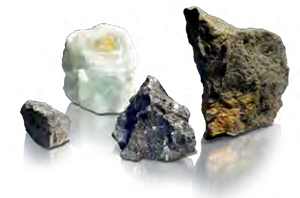
Geological applications among others require fast and accurate goniometer. Image Credit: Thermo Fisher Scientific - Elemental and Phase Analysis

Dual sample loading and urgent sample position when speed is required, more specifically in metallurgy. Image Credit: Thermo Fisher Scientific - Elemental and Phase Analysis

Collection pot for safe loading of pressed powders and liquids. Image Credit: Thermo Fisher Scientific - Elemental and Phase Analysis
Powerful Add-ons for Problem Solving and R&D
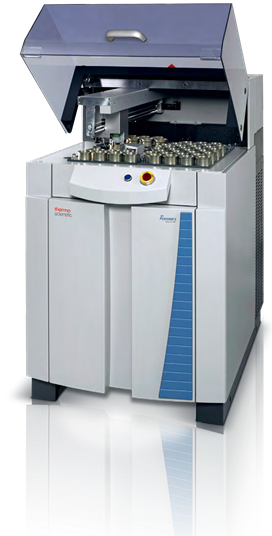
Image Credit: Thermo Fisher Scientific - Elemental and Phase Analysis
The ARL PERFORM’X spectrometer enhances the laboratory by providing new capabilities for hard, non-routine tasks.
- Complete characterization of unknown samples without calibration standards
- Thermo Scientific™ QuantAS™ software enables for semi-quantitative testing of unknown compounds in three minutes, using scans ranging from fluorine to uranium
- Thermo Scientific UniQuant™ software, the industry leader, provides the highest detection and accuracy limits for standard-less analysis up to Am (Z=95)
- Small spot analysis & mapping
- Focus precisely on specimen sections using a 0.5- or 1.5-mm adjustable X-Ray diameter
- Cartography allows for element distribution maps at 0.1 mm resolution
- Enables study of sample homogeneity and inclusions to optimize processes and solve problems
- Safe and stable liquids analysis
- The helium shutter enhances goniometer stability and protection for liquid analysis
- The X-Ray tube window is shielded against liquid spills and loose powders by an optional tube shield
- Simple and secure transfers between solids and liquids are ensured by the sample recognition sensor

Cassettes of various apertures for small and large samples. Image Credit: Thermo Fisher Scientific - Elemental and Phase Analysis

Helium shutter for easy and stable liquid analysis. Image Credit: Thermo Fisher Scientific - Elemental and Phase Analysis

Elemental mapping of inhomogeneous sample or small spot analysis. Image Credit: Thermo Fisher Scientific - Elemental and Phase Analysis

Large sample collections run automatically overnight. Image Credit: Thermo Fisher Scientific - Elemental and Phase Analysis
State-of-the-Art Components for Highest Flexibility
With its fully digitally mastered 6th generation goniometer, the ARL PERFORM’X spectrometer now offers faster and more precise results.
The goniometer can be configured to do qualitative analysis, which includes searching the X-Ray spectrum for elements in a particular sample, or quantitative analysis on specific elements. This state-of-the-art compact goniometer gives analysts more application options with up to nine analytical crystals and four collimators.
Up to 25% more elemental signal count rates are possible because to the extremely small goniometer technology. Better counting statistics are produced at high count rates by enhanced detector linearity.
The analytical range is further expanded by installing seven primary X-Ray beam filters, which also minimize interference from X-Ray tube emission lines on some elements and significantly enhance peak-to-background ratios for most elements.
Additional optional features, such the 4-position programmed aperture changer, extend the variety of sample types that can be investigated. Three additional apertures are configurable, with the following diameters available in addition to the normal 29 mm aperture: 0.5, 1.5, 5, 10, 15, 20, 25, and 35 mm to make it easier to examine samples of various sizes.
Outstanding long-term stability is provided by the X-Ray tube’s LoVap filament technology, which runs at a lower temperature and removes drift caused by tungsten vapor plating on the beryllium tube window. Improving the X-Ray tube cone also enables a closer interaction between the anode and sample. This leads to lower detection limits and higher sensitivity for each element in the periodic table.
- Gearless digital goniometer advantages
- Quantitative analysis can be performed on any element from Be to Am, provided enough crystals are fitted
- Moiré fringe optical encoders provide angular positioning
- No friction – No wear
- Ensures a precise θ/2θ connection between crystal and detector
- Excellent angular positioning and high precision
- Fastest positioning with a slewing speed of 4800°/min
- Fast scanning up to 500° per minute
- Controlling crystal temperature for optimal analytical stability
- Effective standard-less analysis using QuantAS and UniQuant software packages
- Unique polarization effect for reduced background
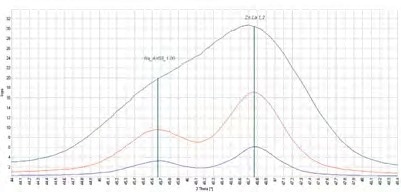
Effect of collimator on resolution and intensity. Image Credit: Thermo Fisher Scientific - Elemental and Phase Analysis
Evolution of the X-Ray Tubes Over the Years

Image Credit: Thermo Fisher Scientific - Elemental and Phase Analysis
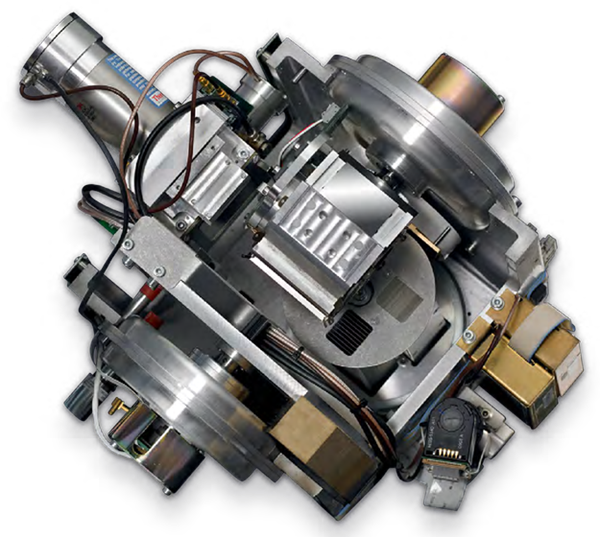
6th generation universal gearless goniometer. Image Credit: Thermo Fisher Scientific - Elemental and Phase Analysis
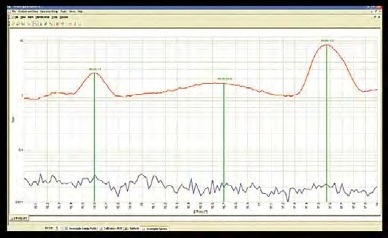
Removal of Rh tube lines with primary beam filter. Image Credit: Thermo Fisher Scientific - Elemental and Phase Analysis
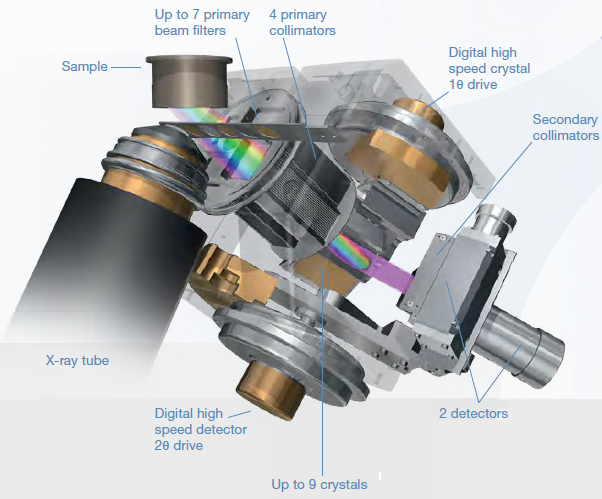
Four collimator changer as standard. Image Credit: Thermo Fisher Scientific - Elemental and Phase Analysis
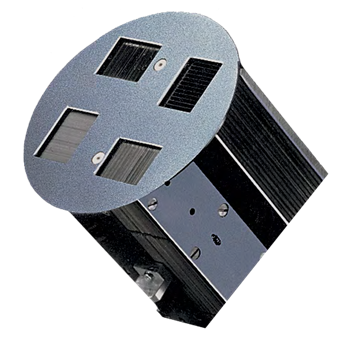
UCCO™ technology. Ultra Closely Coupled Optics between X-Ray tube and sample. Image Credit: Thermo Fisher Scientific - Elemental and Phase Analysis

Image Credit: Thermo Fisher Scientific - Elemental and Phase Analysis
Choice of Analyzed Area Size
Small Sample Analysis
An optional feature is a programmable aperture changer for routine evaluation of tiny samples. It is compatible with cassettes with matching apertures of 35 to 5 mm (the standard diameter is 29 mm; other sizes are 5, 10, 15, 20, 25, and 35 mm).
Small Spot Analysis
- Specimen selection for narrow spot analysis using the on-board camera
- Pinpoint focus with 1.5 mm or 0.5 mm X-Ray beam diameters
- When paired with UniQuant standard-less analysis software, permits complete quantification
- Perfect for failure analysis and samples used in forensics, automotive, industrial, metallurgy, and other R&D applications
Mapping
The precise X-Ray mapping capabilities of the ARL PERFORM’X spectrometer provide thorough elemental imaging of complex non-homogenous surfaces. Analysts can identify and characterize components including inclusions, gradients, and contaminants that are missed by conventional analysis methods.
- Cartography control and overlay using 0.5 mm or 1.5 mm spots
- Create intricate composite maps showing the distribution of elements in the samples
- Fine resolution down to 0.1 mm steps for applications, including process improvement and problem-solving
- It can be used in combination with UniQuant standard-less analysis for comprehensive quantification
- Suitable for materials engineering applications in a variety of industries

Image Credit: Thermo Fisher Scientific - Elemental and Phase Analysis
Results of a Mapping of an Inclusion in a Glass Sample
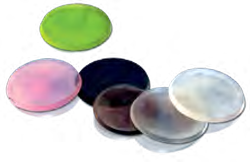
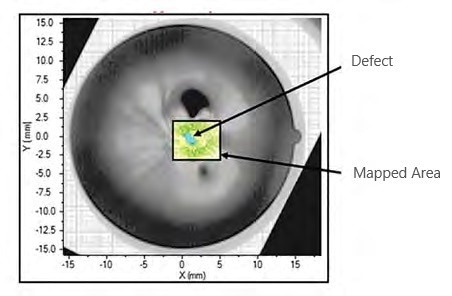
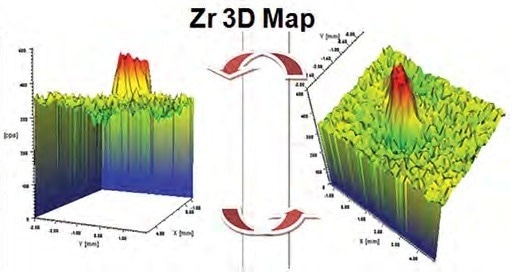
Image Credit: Thermo Fisher Scientific - Elemental and Phase Analysis
Automatic Sample Loading Creates Productivity
The sample changer can be placed directly above the ARL PERFORM’X spectrometer. It can manage a maximum capacity configuration of 112 samples for unattended and overnight analysis, supporting a range of sample sizes. Any urgent sample can be placed in the assigned “urgent” position to be processed first.
A range of homogenous-sized and shaped samples (polymer discs, pressed pellets, fusion beads, etc.) can be placed directly into trays without cassettes.
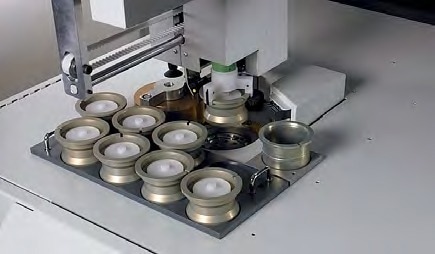
Image Credit: Thermo Fisher Scientific - Elemental and Phase Analysis
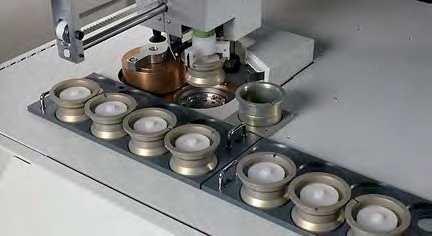
Image Credit: Thermo Fisher Scientific - Elemental and Phase Analysis
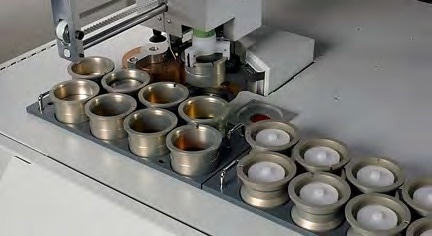
Image Credit: Thermo Fisher Scientific - Elemental and Phase Analysis
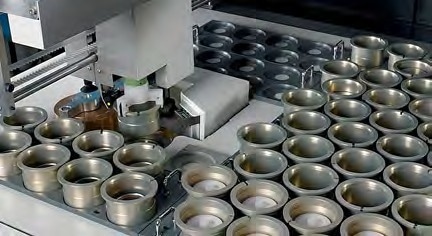
Image Credit: Thermo Fisher Scientific - Elemental and Phase Analysis
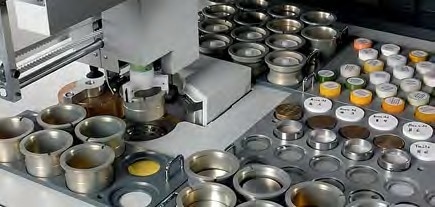
Image Credit: Thermo Fisher Scientific - Elemental and Phase Analysis
Specialized cassettes are used for liquid analysis so that no liquid is ever loaded under vacuum.
An automated sample preparation device can be linked for ongoing online process monitoring in the unattended mode. A straightforward transport belt will connect the automated press, mill, or fusion machine to the ARL PERFORM’X spectrometer. The OXSAS/OEM software option allows the spectrometer and the preparation equipment to communicate.
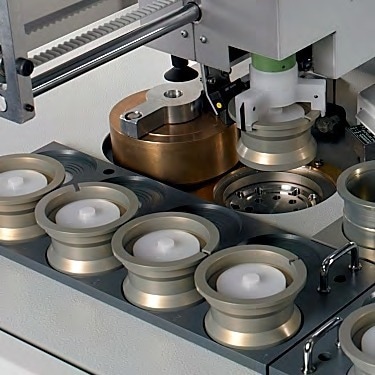
Special cassettes for liquid cell loading. Image Credit: Thermo Fisher Scientific - Elemental and Phase Analysis
OXSAS Software
Easy and Comprehensive XRF Analysis
Thermo Scientific™ OXSAS™ software facilitates the generation of precise, aesthetically pleasing analytical results and makes using the ARL PERFORM’X spectrometer a breeze. OXSAS software adapts to customer needs throughout the instrument's life by using the Windows® 10 operating system and providing the most recent solutions. The complete specifics of all functions are provided in the OXSAS software product specification document.
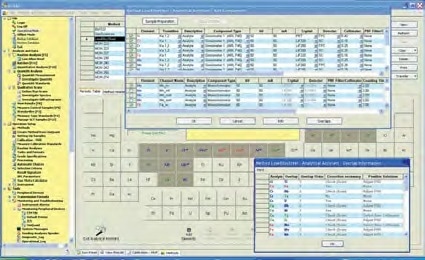
The Analytical Assistant helps define analytical programs, calibrations and instrument use. Image Credit: Thermo Fisher Scientific - Elemental and Phase Analysis
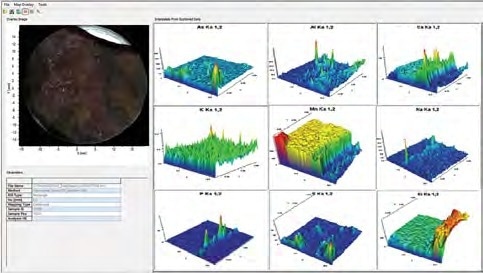
Typical screen of a mapping study. Image Credit: Thermo Fisher Scientific - Elemental and Phase Analysis
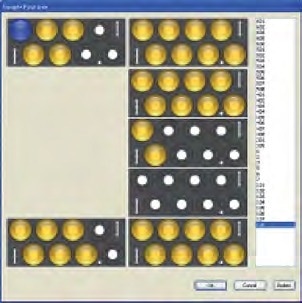
Selection of sample positions from a graphical view of the magazine. Image Credit: Thermo Fisher Scientific - Elemental and Phase Analysis
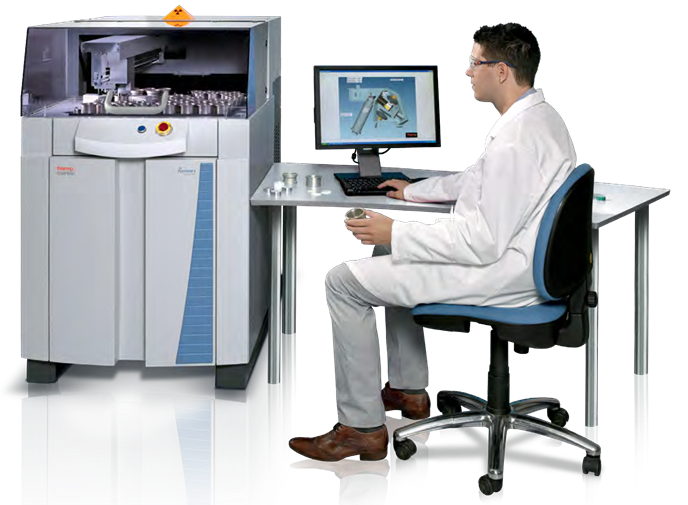
Image Credit: Thermo Fisher Scientific - Elemental and Phase Analysis
Fast and Accurate Analysis
Fast Qualitative Analysis
Peaks can be defined with 0.001° accuracy using step scanning. Continuous digital scanning is perfect for quick qualitative investigation since it can record spectra at up to 500° per minute. Peaks are automatically recognized as the components that are present.
Accuracy Made Easy
Analytical programs and calibrations can be quickly and precisely defined with the help of the online Analytical Assistant. The software called multi-variable regression (MVR) is used to produce calibration curves. By reducing the impact of interfering components in multi-component matrices, correction models increase the precision of the analysis. The models are:
- Line overlap correction
- Additive correction on intensities
- Additive correction on concentrations
- Multiplicative correction on intensities
- Multiplicative correction on concentrations
- Multiplicative and additive corrections on concentrations
- The NBSGSC fundamental parameters software uses Comprehensive Lachance (COLA) with 3-term alphas to duplicate analytical calibrations for homogeneous materials. Inter-element correction factors (theoretical alphas with matrix and LOI/GOI reduction) are calculated and used as known coefficients in MVR. This lowers the requirement for many calibration standards and improves analytical accuracy.
Turnkey Calibrations
Ex-works calibrations are available for a variety of materials, including:
- Oil industry products using Thermo Scientific™
- PetroilQuant™ program or ASTM/ISO methods
- Iron, steel and slags
- Copper, bronze and brass
- Aluminum and alloys
- Various oxides through the General Oxide calibration and the Minerals/Ceramics calibration
- Cement and clinker, limestone and dolomite, glasses, polymers
- Traces in soils and sediments
- Ferro-alloys and others for which analytical specifications are available on request
- Majors, minors and traces in rocks
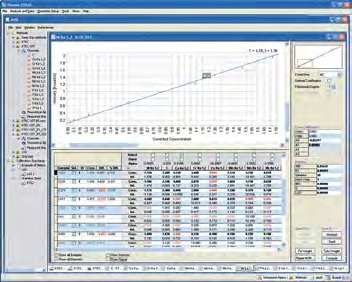
MVR Calibration curve showing real concentrations vs. intensities. Image Credit: Thermo Fisher Scientific - Elemental and Phase Analysis
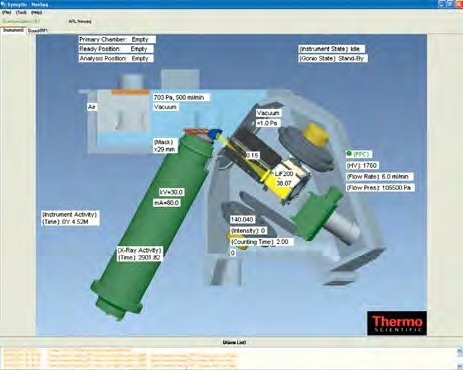
Current operations and status can be checked with the on-line synoptic screen. Image Credit: Thermo Fisher Scientific - Elemental and Phase Analysis
Total Elemental Analysis- A Unique Advantage
XRF offers a significant advantage over other elemental analysis techniques since it can quantify elemental concentrations without the need for calibration standards.
QuantAS – Scan-Based Standard-Less Software
The user-friendly QuantAS software allows users to quickly determine the concentration levels of unknown liquid or solid samples. In just three minutes, the scans that span 70 elements—from fluorine to uranium—can be completed.
Smoothing, background removal, peak identification, overlap and matrix corrections, semi-quantitative concentration computation, and normalization are all automated techniques that allow for rapid and easy assessment of unknown compounds.
Type standardization is provided to provide the maximum degree of correctness. Four multi-element examples are provided for initial setup and ongoing maintenance.
The factory comes equipped with fully installed and calibrated QuantAS software. Thus, as soon as the ARL PERFORM’X spectrometer is installed at the customer’s site, it is prepared to conduct an insightful examination of unidentified materials.
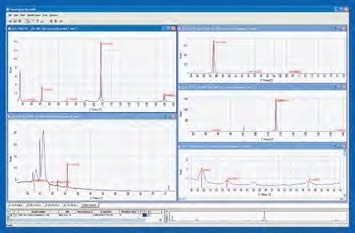
QuantAS software calculates concentrations of elements from F to U in a sample from these five scans. Image Credit: Thermo Fisher Scientific - Elemental and Phase Analysis
Typical QuantAS Results on a Mineral Sample
Longer counting time provides better limits of detection and determination of lighter elements, here fluorine. Source: Thermo Fisher Scientific - Elemental and Phase Analysis
| |
Duration of analysis |
| Element |
2 min 40 sec |
6 min 16 sec |
12 min 12 sec |
| CaO (%) |
42.8 |
43.1 |
42.8 |
| SiO2 (%) |
31.3 |
31.7 |
32.1 |
| Al2O3 (%) |
10.2 |
9.55 |
9.49 |
| MgO (%) |
5.12 |
5.06 |
5.10 |
| MnO (%) |
2.37 |
2.39 |
2.39 |
| SO3 (%) |
2.10 |
2.06 |
2.11 |
| K2O (%) |
1.80 |
1.63 |
1.71 |
| Na2O (%) |
1.42 |
1.22 |
1.26 |
| TiO2 (%) |
1.04 |
0.93 |
0.88 |
| Fe2O3 (%) |
0.96 |
0.95 |
0.93 |
| P2O5 (%) |
0.62 |
0.66 |
0.60 |
| V2O5 (%) |
0.21 |
0.21 |
0.21 |
| SrO (%) |
0.038 |
0.033 |
0.044 |
| ZrO2 (%) |
0.030 |
0.022 |
0.022 |
| La2O3 (%) |
— |
0.073 |
0.051 |
| Y2O3 (%) |
— |
0.025 |
0.025 |
| Cr2O3 (%) |
— |
— |
0.014 |
| F (%) |
— |
— |
0.092 |
UniQuant–Industry Leading Standard-Less Analyses
The most potent and advanced Fundamental Parameters algorithms are used in the optional UniQuant software, which is the most powerful standard-less XRF instrument ever made. It is the most suitable choice for evaluating up to 79 elements in liquids and solids in situations where reference samples are either non-existent or only accessible in small amounts, in unusual forms, or with coatings.
The UniQuant software uses 122 carefully selected line positions to determine peak and background intensities. It also calculates the equilibrium of unanalyzed components in the sample, like organic and ultra-light components. In only a few minutes, concentrations with the best detection limits can be achieved by selecting the components and their counting durations.
The manufacturer has properly installed and calibrated the UniQuant software. As a result, the ARL PERFORM’X spectrometer is ready to perform an informative analysis of unidentified samples as soon as it is deployed at the customer’s site. Stable samples are gradually provided for maintenance and setup.
Typical UniQuant Standard-Less Results
Traces in a geological sample. Source: Thermo Fisher Scientific - Elemental and Phase Analysis
| Element |
Chem (ppm) |
UniQuant (ppm) |
| Mn |
1310 |
1340 |
| Sr |
1100 |
1080 |
| F |
700 |
650 |
| Zr |
277 |
280 |
| V |
165 |
167 |
| Zn |
150 |
135 |
| Ni |
140 |
128 |
| Cr |
134 |
116 |
| Cl |
114 |
98 |
| S |
100 |
158 |
| Nb |
68 |
75 |
| Cu |
49 |
56 |
| Rb |
37 |
33 |
| Ga |
25 |
23 |
| Y |
22 |
18 |
| Sc |
15 |
10 |
Coatings on steel. Source: Thermo Fisher Scientific - Elemental and Phase Analysis
| |
Sample A |
Sample B |
| Element |
Given |
UniQuant |
Given |
UniQuant |
| Cr (mg/m2) |
1.9 |
2.1 |
8 |
8.4 |
| Sn (g/m2) |
11.5 |
10.9 |
4.97 |
4.92 |
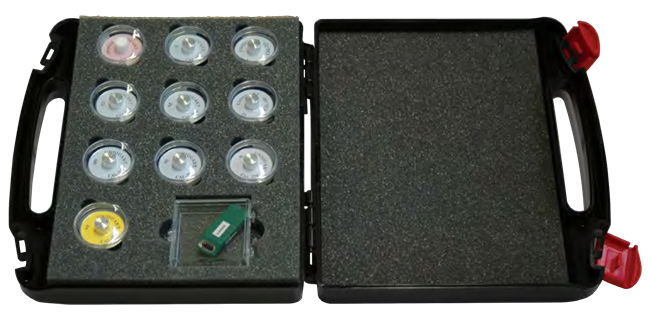
UniQuant, the world's most renowned standard-less analysis package. Image Credit: Thermo Fisher Scientific - Elemental and Phase Analysis
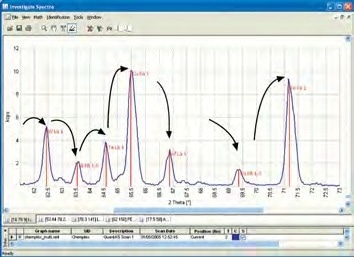
UniQuant software uses up to 122 carefully selected line positions to determine peak and background intensities. Image Credit: Thermo Fisher Scientific - Elemental and Phase Analysis